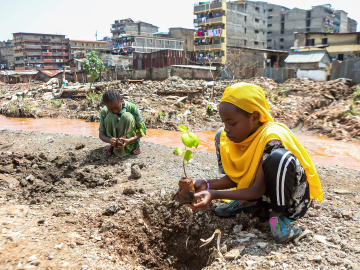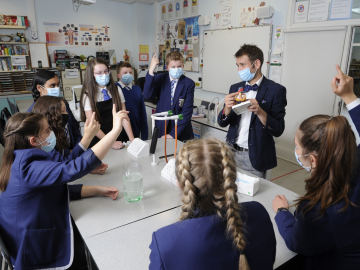The Role for Mindfulness in Public Health
My favorite definition of mindfulness is “to pay attention with abiding faith in a loving universe,” from Meditations from the Mat by Rolf Gates. Put more simply, mindfulness is a practice of first observing and then letting go of various thoughts and feelings. It takes practice to learn to rein our brains in, but research is increasingly demonstrating that learning is worth our effort.
Mindful modalities like yoga and meditation have been studied at length and praised for their ability to provide relief from the toll stress takes on our health. They can decrease work-related stress, improve bone health in as little as 12 minutes, and positively impact mental health. Chronic stress has been shown to impact a wide range of hot topic health outcomes, including premature birth, reducing our inflammatory response, which contributes to the health of our immune systems (among other things), and obesity. When reviewing the current top 10 causes of death in America and comparing it with the laundry list of benefits attached to mindfulness, it looks more and more like something public health should take seriously.
There’s been a noticeable shift in recent years, especially with the push towards accreditation for public health agencies, to actively engage in population health management and be less focused on providing direct services. Many public health agencies, particularly at the state and local level, take their direction (and their funding) from the federal health agencies, like the CDC. The CDC is taking a 4-pronged approach to prevent chronic disease:
- Monitor trends and progress through epidemiology and surveillance;
- Support changes to our environments that support healthy behaviors;
- Promote quality clinical care; and
- Link community programs with clinical services.
The link between community-based programs and clinical services is where mindfulness can have the most impact. We have community-based programs that help people with arthritis establish a walking regime, teach diabetes prevention, and provide people with counseling and tools to quit smoking. We use public health nurses, home visiting staff, community health workers, and community pharmacists to provide a range of services like medication adherence counseling and education to new parents. Why not incorporate a little mindfulness into the mix?
Yoga and mindfulness are both a practice of noticing. What could be more helpful than developing an awareness of your stress level, and learning to approach those stressors with a different mindset than overwhelmed? To notice when a trigger to smoke or engage in another harmful behavior arises with curiosity, to forgive an impulse decision that is counter to a goal, to observe the outcome of a behavior without judgment...these are all lessons we can learn from a mindfulness practice.
I’d like to promote these practices from a place of learning to be more compassionate and emotionally healthy communities, which can also help meet the goals of public health. Research has certainly demonstrated that these softer skills are impacted positively by mindfulness. However, it could be that the best way to incorporate these practices into the daily activities of our community members is by attaching them to specific health outcomes, like weight loss and mental well-being. Widespread promotion of mindfulness, when used in conjunction with guidelines and a team-based approach to prevention and clinical care, can be a powerful addition to the 21st century public health toolbox.
Anna Bradley, MS, CHES is an evaluator in the field of public health as well as a 200-hour registered yoga teacher (RYT-200).
Join the thousands of subscribers who rely on Global Health NOW summaries and exclusive articles for the latest public health news. Sign up for our free weekday enewsletter, and please share the link with friends and colleagues: Subscribe to GHN
iStock




